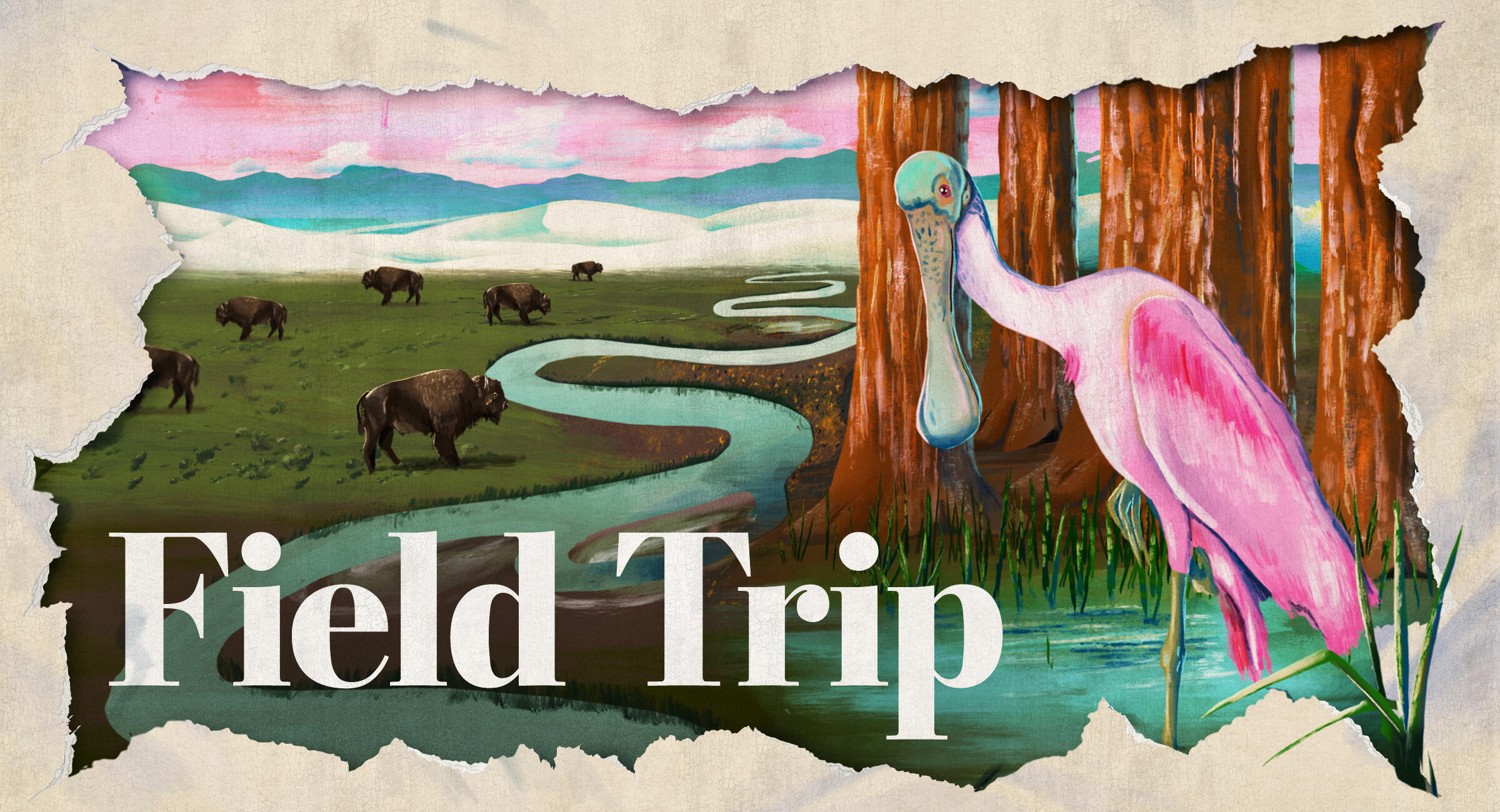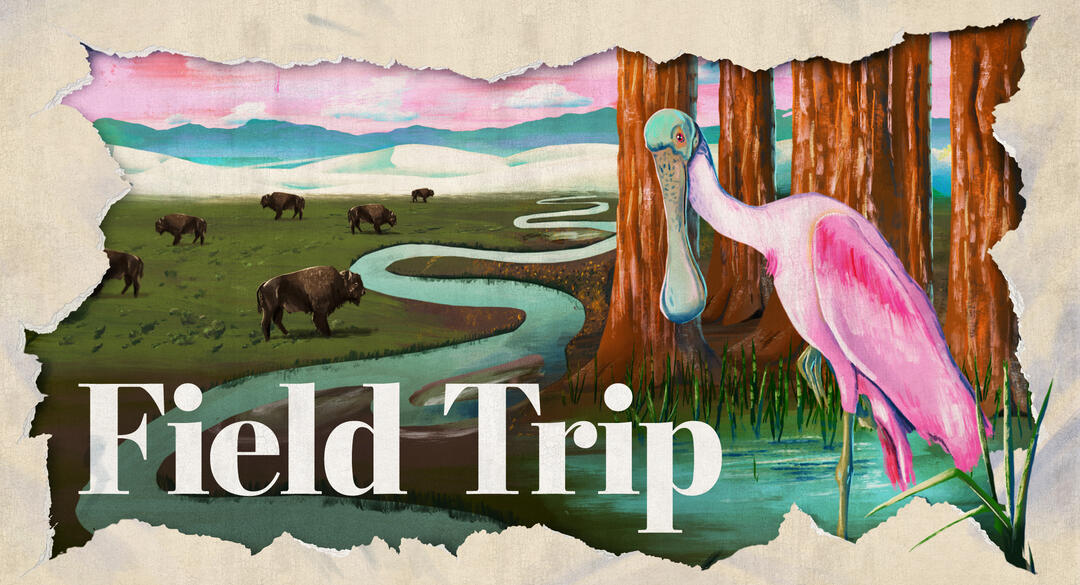Click here to listen to Lillian Cunningham's podcast on Everglades National Park.
Q. Are you a birder? If so, what was your spark bird?
A. Decades ago, my parents gave me an Audubon print of hummingbirds for my birthday. I’ve long felt a particular love and delight for these little birds that manage to be so graceful and frantic at the same time. That print hangs in my current home near Washington, DC. And these days, hummingbirds frequently visit a big butterfly bush right outside my kitchen window, so it feels like I’m surrounded by sweet reminders of them inside and out.
But I will say that my reporting trip to the Everglades sparked a whole different level of enthusiasm for birds than I’ve ever had before. Within the first 10 minutes of being inside Everglades National Park, I saw a huge Anhinga perched on a low branch just a few feet from us. Its dark wings were spread wide, drying in the sun. I think I literally turned to my colleague and said, “I have to become a birder!” I was just completely awestruck by the majesty of it.
Q. How did your imaginings of what the Everglades would be dovetail with your experiences there with Audubon’s Jerry Lorenz?
A. This was one of those rare experiences in life where reality exceeded my imagination. For the “Field Trip” podcast, Jerry took me out into Florida Bay and brought me onto some of the small keys that serve as protected nesting habitats for Roseate Spoonbills. No one but a couple Audubon researchers ever step foot on these little mangrove islands, so it felt almost otherworldly to have the chance to stand there with bright pink spoonbills circling overhead. We spent a magical day recording the calls of their babies and the whoosh of their wings as they landed in the trees above us.
To have that experience, plus the chance to talk with Jerry about his lifetime of incredible work in the Everglades, gave me such an appreciation for both the uniqueness of that ecosystem and the immense effort it has taken for him and others to document and protect it.
Q. You have covered national parks across the country. How does the Everglades stand out?
A. When Everglades National Park was established in 1947, it marked the very first time a national park had been created specifically to protect biodiversity. Previously, the crown jewels of most national parks were considered their outstanding geological features—stunning mountain ranges, canyons, caverns. Here, the crown jewels were the birds themselves, the manatees, the orchids. It was a really interesting and important shift in the U.S. government’s thinking about preservation.
For the podcast, I had the chance to report from a number of national parks—all spectacular—but I will say that I could feel that difference in the Everglades. Its real beauty was how much it buzzed with life, from water to land to sky.
Q. What do you hope for the Everglades into the future?
A. Like so many cherished landscapes today, the Everglades faces a host of challenges related to both climate change and human development. The federal government and the state of Florida have dedicated billions of dollars to the Comprehensive Everglades Restoration Plan, in an attempt to reverse some of the serious damage that’s already been done and to stave off some of the future problems that loom on the horizon. But it’s tough, slow work. And researchers like Jerry Lorenz have already seen some of the wildlife—like Roseate Spoonbills—struggle to continue to call this place home.
What would the Everglades be without them? Or without the Great Egret? Or Glossy Ibis? I hope those aren’t questions that future generations need to confront.
Q. Where do your national parks travels take you next?
A. I’m still figuring that out! For the “Field Trip” podcast, I spotlighted five national parks out of the 63 across the country, so I still have a long list of fantastic places to explore —both as a reporter and just as a person who loves to be out in nature any chance I can.
Click here to learn more about Audubon's work in the Everglades, and click here to read the most recent wading bird report.









